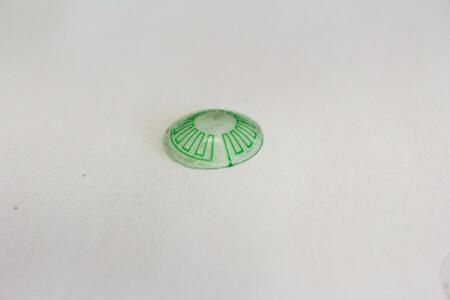Intraocular pressure IOP is currently the only modifiable risk factor for the progression of glaucoma. IOP is measured using tonometry and varies over time; however, the tonometry method currently being used only gives the doctor single snapshots of the IOP, which is measured only at the time the patient is in the doctor’s office.

The new method that LenSense is working to bring to the market is proving to be more effective than the current methodology. Developed from Professor Yongjun Lai’s lab at Queen’s University, the novel device is a contact lens with an embedded microfluidic microchannel. A smartphone camera captures movement of the microfluid within the channel and an AI-based app enables accurate calculation of the IOP within the patient’s eye(s). This method can provide a more accurate IOP reading and help in earlier diagnosis while also improving treatment efficacy for glaucoma patients.
The Queen’s University startup is commercializing a novel low-cost device for accurate, non-invasive IOP monitoring using a mobile phone. Incorporated in spring 2022, LenSense received startup funding from Queen’s University, supported by FedDev Ontario under the TIAP-led Venture Builder Program. They have also received significant in-kind support from Queen’s Partnerships and Innovation (QPI) related to intellectual property strategy, filing and prosecution of patent protection, and licensing of the technology, company formation, business and regulatory strategies, network development, and investment readiness and attraction.
The company spent their early days working on a better understanding of the lens performance, improving the lens materials for patient comfort and making the design more user-friendly. Dr. Afrin also spent a fair amount of time learning about the entrepreneurial journey by participating in the Queen’s x Tandem Launch program, QPI’s Wings Accelerator and the WE-CAN Project workshops and networking events.
“It has been challenging to find a manufacturer who could further develop the prototypes needed for us to take this to the clinical trials phase,” says Dr. Tanzila Afrin, Co-founder of LenSense. In late 2022, LenSense developed a working prototype but finding the right manufacturer to replicate the prototype took longer than expected.
Recently LenSense has achieved a breakthrough in finding partners who can help them to achieve this goal as well as a new injection of funding from QPI.
“We hope this new investment and partnership will lead to better quality-controlled lenses, which we can produce on a small scale. This will allow us to reach the next step – in-human testing,” says Dr. Afrin. “We need to perform a first-in-human clinical trial before we can fully commercialize the product. This will enable us to test the performance of our contact lens-based system and direct us to any needed improvements to optimize IOP monitoring.”
The company hopes to build momentum with the prototype partner, leading them to clinical trials and further funding.
“This is an exciting development after initial challenges,” says Dr. Michael Wells, Partnerships Development Officer with QPI. Dr. Wells has been an integral part of the support team for LenSense. “We are looking forward to cementing these partnerships and getting the system tested in humans. This will represent a key milestone in the commercial development pathway for LenSense.”
“Queen’s Partnerships and Innovation has been great at connecting me with a variety of opportunities to ensure LenSense is successful. I look forward to what the future brings!” adds Dr. Afrin.
